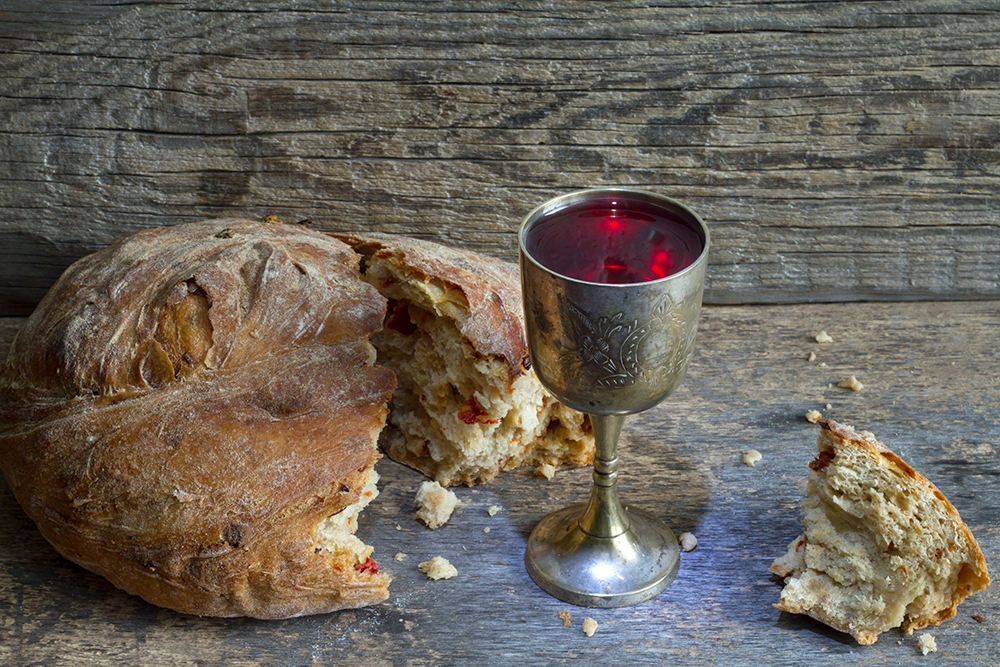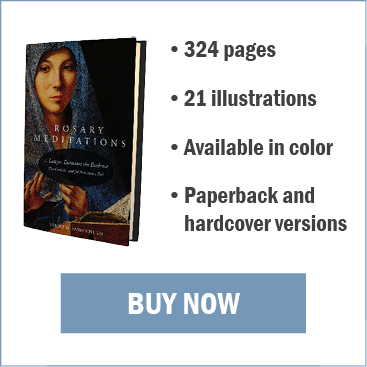
Corpus Christi
Today, June 15, is the Feast of Corpus Christi, in which the Catholic Church celebrates the body and blood of Jesus Christ in the Eucharist. While not a holy day of obligation, it is a major holiday in many countries throughout the world.
You might wonder why a celebration of the Eucharist occurs a full two months after Maundy Thursday, when the rite was instituted by Jesus during the Last Supper. The Eucharist is indeed celebrated on Maundy Thursday; however, it is one of several events commemorated during the liturgy on Holy Thursday, the others being the washing of the disciples’ feet, the institution of the ministerial priesthood, and the agony in the Garden of Gethsemane.
To focus solely on the sacrament of the Holy Eucharist, a separate feast day was created to commemorate the Passover meal and, more importantly, the change by which the bread and wine offered during Mass becomes the body and blood of Jesus, a teaching known as transubstantiation.
The Miracles at Lanciano and Bolsena
Although belief in the doctrine on transubstantiation was made obligatory by the Fourth Council of Lateran, convoked by Pope Innocent III in 1215, the Church’s teaching on transubstantiation has been met with disbelief and criticism throughout the centuries. However, when some believers have in good faith doubted the dogma and prayed for assistance to overcome their unbelief, the Lord has answered their prayers in spectacular fashion. Such was the case on two occasions, both taking place in Italy, but 500 years apart.
During the eighth century, a monastery of refugee Basilian (Greek rite) monks was established as St. Legontian at Lanciano, Italy, a few miles from the Adriatic coast. The name of the monk is lost in the mists of time, but the story is that he constantly prayed to overcome his doubt as to whether the consecrated bread and wine were truly the body and blood of Christ. One day during Mass, as he spoke the words of consecration, the elements visibly became flesh and blood. The congregation responded to his outcry and was likewise overcome.
The Host and five globules into which the blood congealed have been preserved for more than 1,200 years and are on exhibition behind the altar of St. Francis’ Church, built over the earlier St. Legontian. One may walk entirely around the relics and examine them closely. In 1970 they were examined, with permission of the ecclesiastical authorities, by two professors on the medical faculties of the Universities of Arezzo and Siena, in Italy. This examination pre-dated testing of the blood on the Shroud of Turin. The professors found that the five globules are dried blood, and the Host is a cross-section of a human heart. The blood type of both is AB, later found to be the blood type on the Shroud of Turin and on the Sudarium of Oviedo (see May 18 blog post). The section of the heart is a vertical one, containing tissue from both an auricular (upper) and a ventricular (lower) chamber, so that the entire heart is represented by the section. The section is an “even and continuous slice.” Since the first anatomic dissections on a human body were done in the fourteenth century, it is impossible that anyone could have created such a section in the eighth century, and only a handful of trained people could have done so after the fourteenth century. In all probability, the relics are what they purport to be—a miraculous gift of the body and blood of Christ, in order that, like Thomas, we may “not be faithless, but believing.”
The second occasion, which directly led to the establishment of the Feast of Corpus Christi, occurred fifty years after the Fourth Council of Lateran, in 1263, and is an event that is thoroughly documented. A German priest, Peter of Prague, was experiencing doubt about transubstantiation. He made a pilgrimage to Rome that year, praying that it would resolve his doubt. Unsuccessful, he started home on the road north, Via Cassia, stopping at Bolsena, located about seventy-five miles from Rome. He celebrated his daily Mass at Santa Cristina before an eighth-century altar, praying for faith. As he consecrated the Host, it bled profusely, and he wrapped it in the corporal (a linen cloth on which the consecrated elements are placed). The congregation crowded around him and saw the Host bleeding. It bled on the corporal, the purificators, and onto the marble altar steps and floor.
Pope Urban IV and his court were at Orvieto, twenty-five miles to the east. Peter of Prague, the clergy of Santa Cristina, and the witnesses went to Orvieto to notify the Pope of this extraordinary event. The Pope sent the Bishop of Orvieto and two theologians, Thomas Aquinas and Bonaventure, to Bolsena to take the depositions of all the witnesses and to ascertain the facts.
Upon examination of the depositions, the decision was made to transfer the relics to Orvieto, the diocesan seat. The Pope and a great procession came out to meet and receive the relics and take them to the cathedral. On September 8, 1264, Urban IV proclaimed the Feast of Corpus Christi to celebrate the institution of the Eucharist and the gift of Christ’s body and blood, which are touched on but submerged in the many other events of Holy Week and Holy Thursday.
The Relics at Orvieto
Pope Urban IV asked Thomas Aquinas and Bonaventure to submit to him their proposals for a liturgy for the new Feast of Corpus Christi. When Bonaventure saw Thomas’ proposal, he tore up his own and asked the Pope to use Thomas’. Thomas Aquinas composed some of the Church’s greatest hymns as a portion of the Corpus Christi liturgy, including Pange lingua, which is still widely used on Maundy Thursday during the procession of the Blessed Sacrament to the altar of repose, and Adoro te devote, a prayer of adoration of the Eucharist, which has been a favorite for centuries.
The relics of the miracle at Bolsena are kept and, in part, exhibited at Orvieto Cathedral and Santa Cristina. The corporal is on view above the altar of the Chapel of the Corporal in Orvieto. There are numerous blood stains of varying sizes scattered upon the linen. The remains of the Host and the purificators are kept in a reliquary and are not on view. Unlike the miracle at Lanciano, the Host did not change its accidents; it remained bread, now just crumbs, but it miraculously bled. The wine was unaffected. At Santa Cristina in Bolsena, four pieces of marble are on view above a chapel altar. Though the stone is impermeable, it nevertheless was permanently stained with the blood that fell upon it.
In his mercy, the Lord has granted the miracles at Lanciano and Bolsena to fortify our own faith and belief in the occurrence of the miracles on our altars, in our presence, which, absent faith, are literally incredible.
